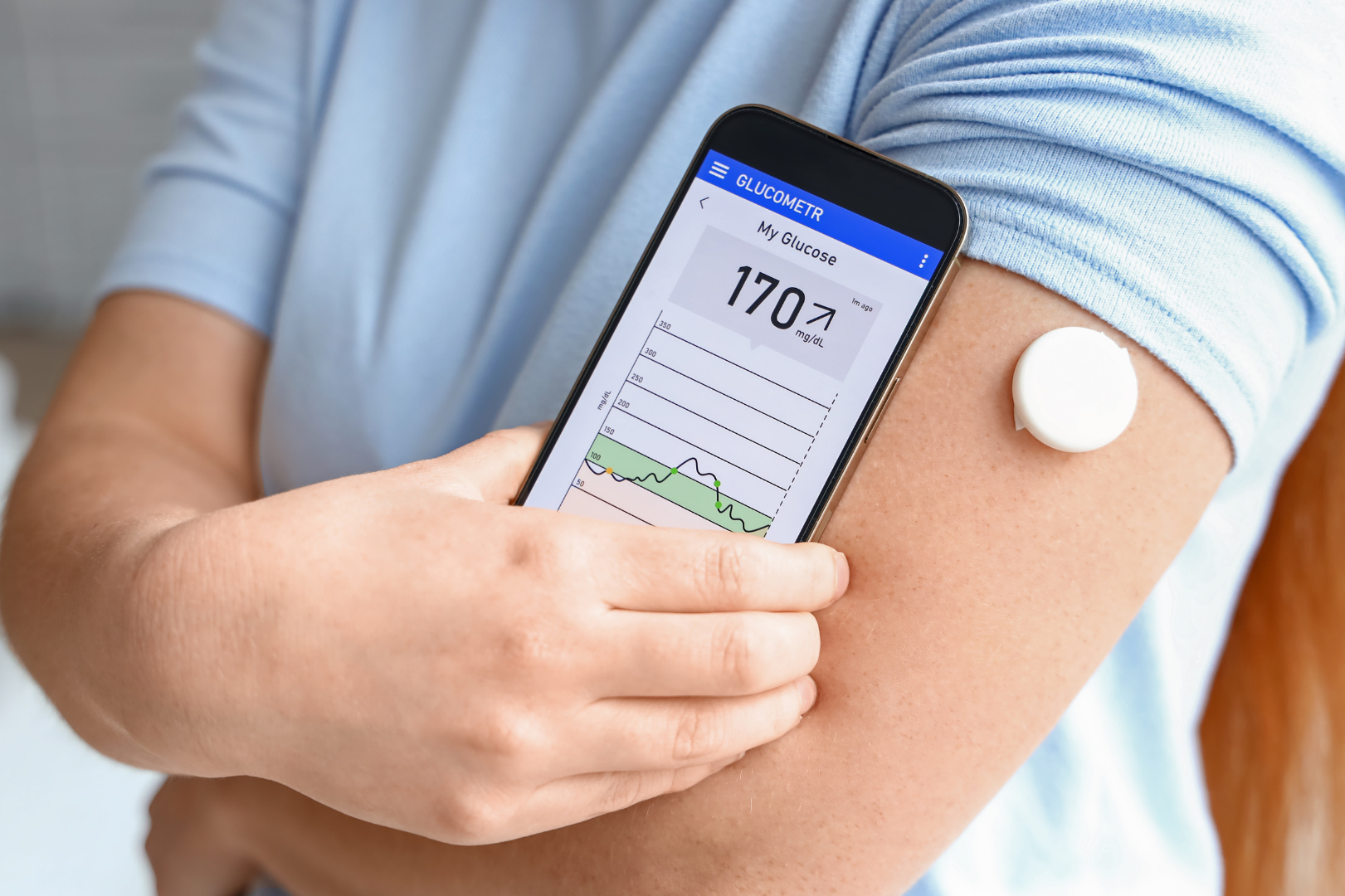Continuous Glucose Monitoring (CGM)
For individuals living with diabetes, continuous glucose monitoring (CGM) has transformed the way they manage their condition, offering real-time insights into their glucose levels and enhancing their overall quality of life. In this blog post, we'll delve into the world of continuous glucose monitoring, exploring its benefits, functionality, and the ways it has revolutionized diabetes management.

Understanding CGM
Traditionally, managing diabetes required regular fingerstick blood tests to monitor glucose levels, a process that was not only cumbersome but also offered only snapshots of the person's glucose status. CGM, however, takes diabetes management to a whole new level by providing continuous, real-time data about glucose levels.
At the core of a CGM device is a small sensor that is inserted under the skin, typically on the abdomen or arm. This sensor measures glucose levels in the interstitial fluid – the fluid that surrounds the cells – and transmits this data to a connected device, such as a smartphone or a dedicated receiver. Users can instantly view their glucose readings and track trends, allowing them to make informed decisions about their food intake, physical activity, and insulin dosing.

The Benefits of CGM
1. Real-Time Data: CGM provides a constant stream of glucose data, allowing individuals to detect patterns, fluctuations, and trends that might go unnoticed with traditional monitoring methods.
2. Early Detection: CGM systems can alert users to high or low glucose levels, helping them take prompt action to prevent severe hyperglycemia (high blood sugar) or hypoglycemia (low blood sugar).
3. Improved Accuracy: CGM systems offer greater accuracy compared to traditional fingerstick tests, reducing the likelihood of misjudging glucose levels.
4. Personalized Insights: CGM data helps users understand how their lifestyle choices impact their glucose levels, enabling them to make personalized adjustments to their routine.
5. Reduced Burden: With fewer fingerstick tests required, CGM reduces the physical and mental burden of diabetes management, improving overall quality of life.
6. Enhanced Safety: CGM can be especially beneficial for children and the elderly, as it provides caregivers and family members with real-time visibility into glucose levels, enhancing safety and peace of mind.
The Drawbacks of CGM
CGM technology is always changing and getting better. Here are some things to know about most CGMs:
- Sensors need to be changed. Depending on the system, you may need to change the sensor every few days. Some systems have sensors that last up to14 days.
- Some CGMs will require that you prick your finger to confirm the CGM's accuracy.
- Acetaminophen, Vitamin C, can affect the results in some CGMs, reporting higher readings. Taking Tetracycline and Salicylic Acid can result in readings being lower.

Empowering Diabetes Management
Continuous glucose monitoring empowers individuals with diabetes to take control of their health in a number of ways. Here are a few examples:
1. Data-Driven Decision-Making: CGM data helps users make informed choices about meal planning, exercise, and insulin administration, resulting in tighter glucose control.
2. Hypoglycemia Prevention: By receiving alerts for low glucose levels, users can prevent dangerous hypoglycemic episodes that can lead to unconsciousness or other complications.
3. Fine-Tuning Treatment Plans: Healthcare providers can use CGM data to tailor diabetes treatment plans to the individual's unique needs, leading to optimized glycemic control.
4. Remote Monitoring: With cloud-based systems, caregivers and medical professionals can remotely monitor a patient's glucose levels, enabling timely interventions.
5. Lifestyle Integration: CGM seamlessly integrates into daily life, making diabetes management less intrusive and allowing users to focus on living their lives to the fullest.

How do I get a GCM?
Your Primary Care Physician or Endocrinologist can order a CGM for you. The cost of a CGM depends on the type of insurance you have, and preauthorization is usually required. Contact The Health Plan's customer service team at +1 800-624-6961 to find out what percentage you would have to pay. Most companies who make CGMs have assistance programs available.
References: Healthwise Health Library, Current as of: March 1, 2023